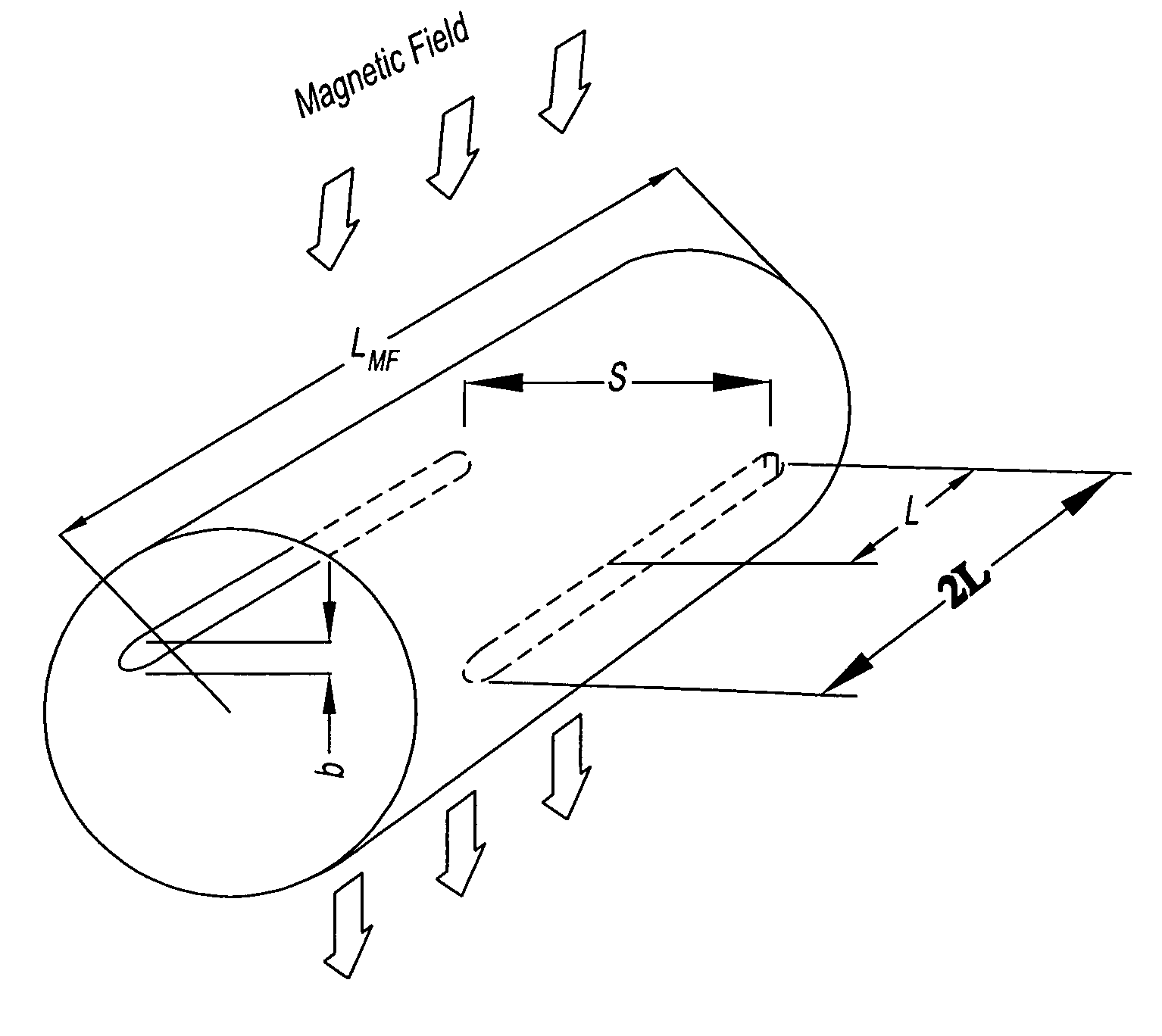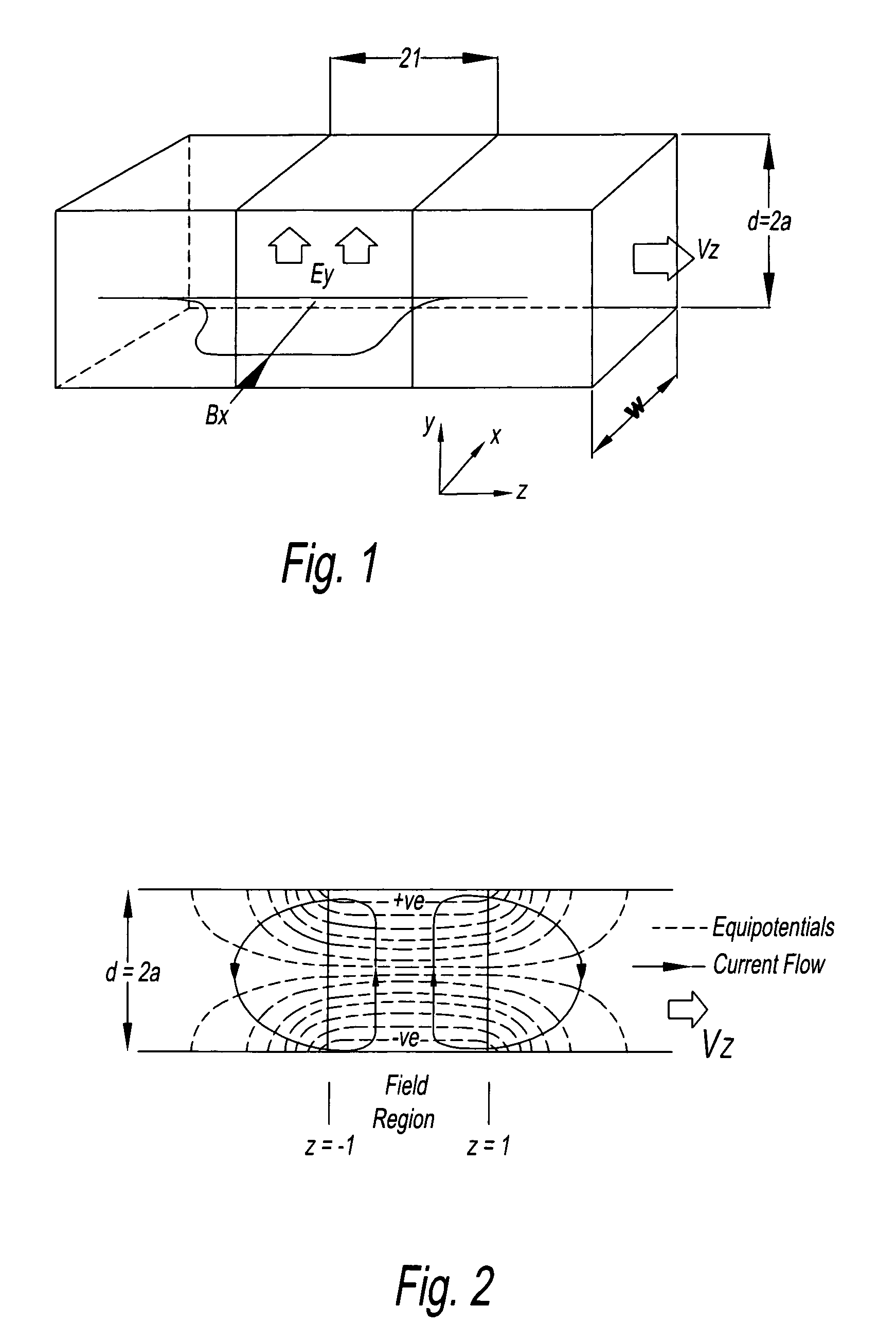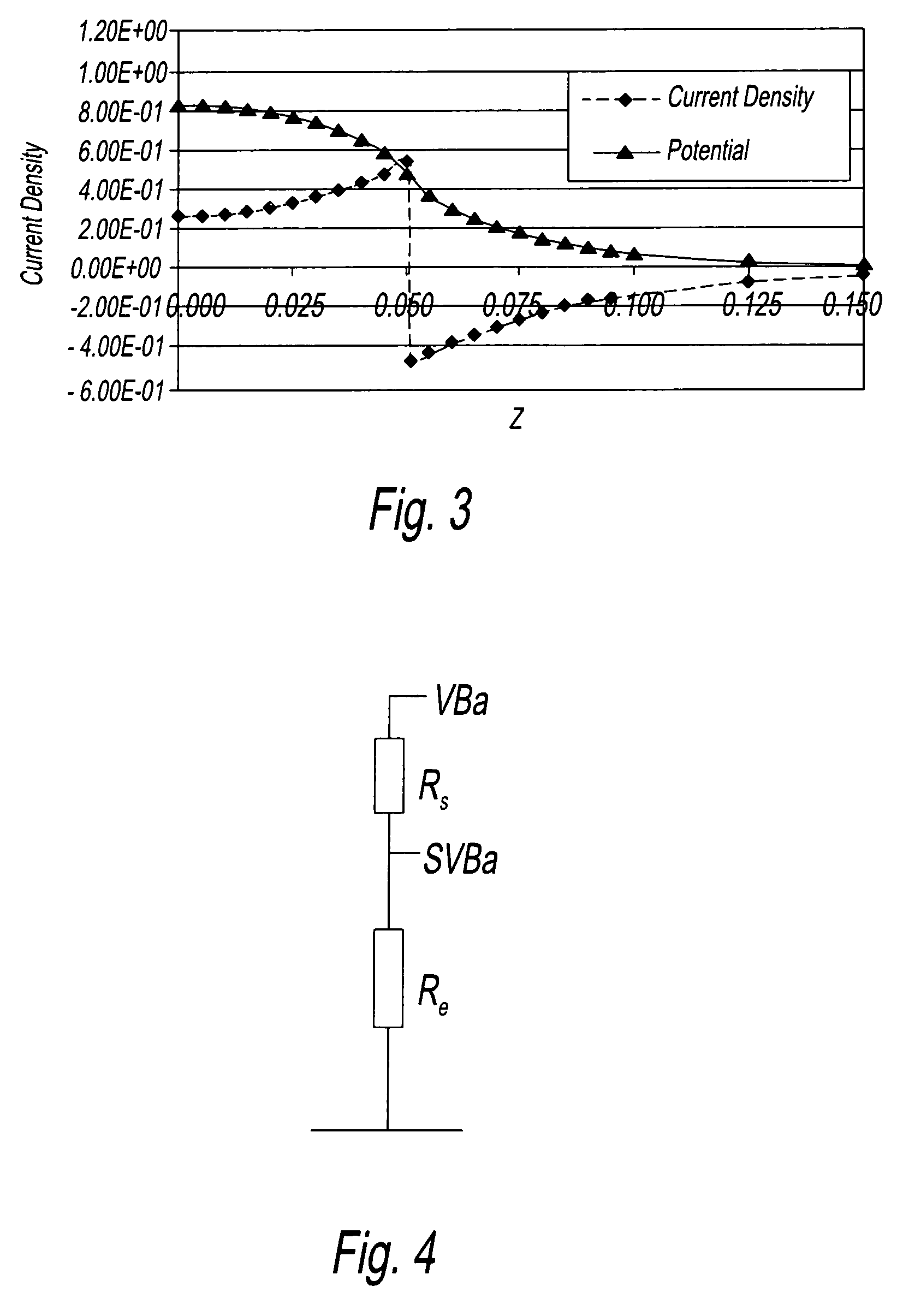Electromagnetic flow meter for low conductivity fluids
a low conductivity fluid and flow meter technology, applied in the field of electromagnetically driven flow meters, can solve the problems of small reduction, change in measured potential, and inability or undesirable, and achieve the effect of increasing the length of the electrode and reducing the effective electrode impedan
- Summary
- Abstract
- Description
- Claims
- Application Information
AI Technical Summary
Benefits of technology
Problems solved by technology
Method used
Image
Examples
Embodiment Construction
[0048]To assist in understanding the present invention, a theoretical explanation will first be given.
[0049]A magnetic flow meter is in essence a type of M.H.D. (magneto-hydrodynamic) generator. A simple form consists of a duct, lined with an electrically insulating lining through which the fluid to be measured flows, and in operation the fluid is made to pass through a transverse magnetic field within the duct. The moving fluid creates an electric field, E in a direction perpendicular to the motion, and to the magnetic field. The strength of the electric field depends upon the velocity V, and upon the intensity of the field B. Appropriately placed electrodes are connected to electronic apparatus that measures the potential difference between them and converts this into a form that indicates the mean flow through the meter. The details of the electronic apparatus are not germane and many conventional schemes are known which may be used herein.
[0050]FIG. 1 shows the layout of a simpl...
PUM
 Login to View More
Login to View More Abstract
Description
Claims
Application Information
 Login to View More
Login to View More - R&D
- Intellectual Property
- Life Sciences
- Materials
- Tech Scout
- Unparalleled Data Quality
- Higher Quality Content
- 60% Fewer Hallucinations
Browse by: Latest US Patents, China's latest patents, Technical Efficacy Thesaurus, Application Domain, Technology Topic, Popular Technical Reports.
© 2025 PatSnap. All rights reserved.Legal|Privacy policy|Modern Slavery Act Transparency Statement|Sitemap|About US| Contact US: help@patsnap.com



